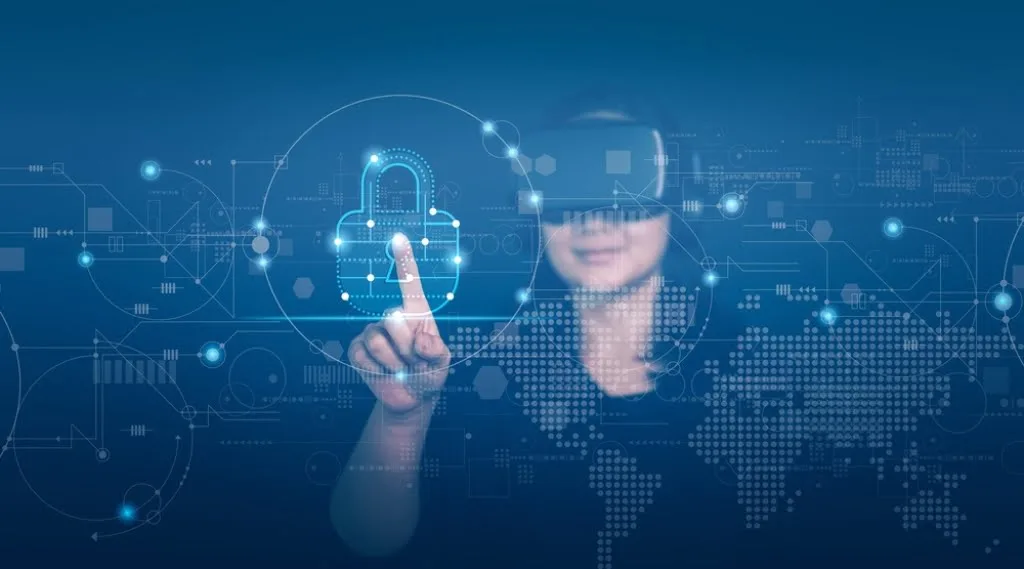In the realm of digital design, a revolution could well be on the horizon. The impact that Virtual Reality (VR) will have on web design is something that’s starting to spark debate across various sectors, and it could be poised to transform the way we interact with the digital world.
With VR, web design could transcend the flat, two-dimensional interfaces we’re used to. Immersive, interactive experiences that blur the boundaries between digital and physical realms are becoming increasingly common in gaming and entertainment, but can this extend to web design?
Here, we’re going to explore how VR is changing web design and whether its impact is a flash in the pan or a sign of something much, much bigger.
VR and Web Design: What’s the Potential?
Before we try to figure out how virtual reality might revolutionise web design, let’s cover the current state of VR. The integration of VR into web design is still relatively new, but it is showing promise that’s hard to ignore.
It’s being used across a wide range of sectors, helping people to visualise products or engage with services in a more intuitive and fun way. But what are the pros and cons? And is VR in web design here to stay? Well, let’s start by looking at the benefits.
The Benefits of Integrating VR into Web Design?
Enhanced User Experience
One of the most profound benefits of integrating VR into web design is the enhanced user experience mentioned earlier. Having a top-notch website is crucial, and VR empowers designers to craft immersive, three-dimensional environments where users can explore and interact with content in ways previously unimaginable.
This isn’t just browsing a website; it’s embarking on a digital adventure. The heightened level of immersion leads to increased user engagement, with users feeling more invested in the website and spending more time exploring its content.
Improved Visualisation
Want to know what a sofa would look like in your living room? Have you ever wondered how it might feel to stand next to a woolly mammoth? Well, this is another area where VR can excel. Enabling a new level of realistic visualisation, VR helps users examine products, services and content from all angles.
This allows them to all try out new furniture, clothes and other products and explore museums, galleries and events from the comfort of their own homes. For e-commerce sites, this “try before you buy” experience boosts customer confidence, helping to entice a purchase (which is one of our top e-commerce tips). As for experiences like museums, the VR capacity can be locked behind a paywall, meaning that reach can be enhanced without giving away free content.

A More Inclusive Experience
Most importantly, VR can provide an immersive environment that’s truly inclusive for those living with disabilities such as motor conditions and visual or cognitive impairments. It can give the potential for more inclusive commands like voice activation or head movements that are easier to use for many than a traditional mouse and keyboard.
For users with visual impairments, spatial audio cues and haptic feedback can help VR create a rich landscape that better compensates for visual limitations. Users can then navigate and interact with the site using auditory and tactile signals. Meanwhile, those with cognitive differences can be offered distraction-free environments tailored to the user’s specific needs. This can reduce the chances of cognitive overload and make navigation and interaction more manageable.
Is It All Positive?
Well, not exactly. It’s true that the potential of VR is exciting, but it’s essential to acknowledge the challenges it presents.
Motion Sickness
This is one of the most common concerns for how VR might change web design. The immersive experiences created by VR can sometimes lead to dizziness or nausea in users. Theoretically, web designers can mitigate this by creating smooth VR transitions and options for users to adjust settings for their own comfort settings. A focus on minimising abrupt movements and providing user control is definitely the way to go.
Loading Times
VR content can be pretty heavy, leading to slower load times. There’s a chance this might frustrate users and detract from the overall experience. Once again, though, there are ways around this. Designers can optimise VR content by reducing file sizes, implementing caching techniques, and leveraging Content Delivery Networks (CDNs).
Privacy and Security
As concerns for VR web design go, this is the big one. Since the introduction of GDPR regulations in 2016, web designers have had to dedicate much more time and resources to ensuring that data privacy and protection are a priority (rightly, in our view). VR headsets often collect highly personal information, including biometric data. If this isn’t adequately protected, the information could be exploited, posing a significant security threat.
Ransomware and social engineering are the other major security concerns. Due to the immersive nature of VR, there are worries that hackers will be able to manipulate vulnerable users more easily into revealing confidential information.
To resolve this, designers should continue to prioritise security and GDPR in much the same way as they are doing. For users, keeping software and hardware updated, as well as considering the use of a VPN, are great ways to keep your information safe.
Looking for Expert Web Design Services?
At One2create, we’ve got over 16 years of experience working with a range of businesses to provide quality website and e-commerce design services. We can help you capture the imagination and attention of all internet users and ensure that your site is fully optimised using our SEO services.
You can also stay up to date with the latest in web design trends by keeping an eye on our blog page, or reaching out to us for more information.







